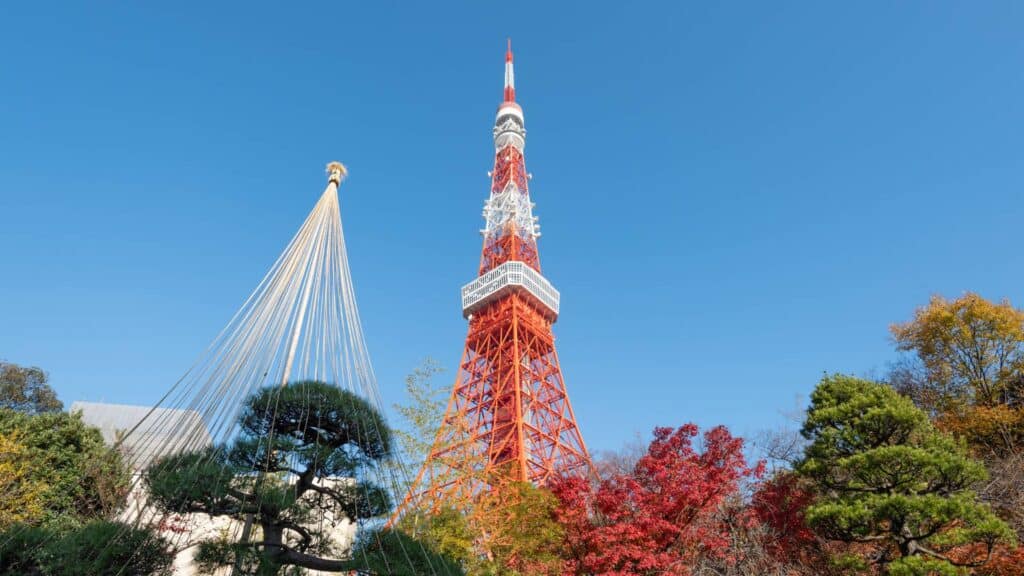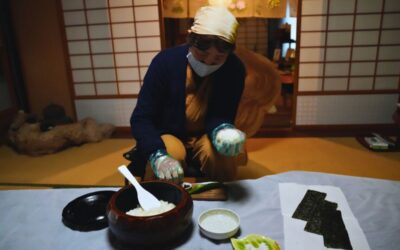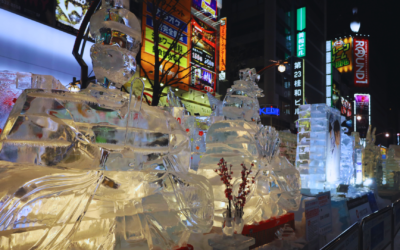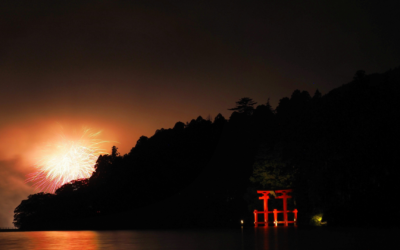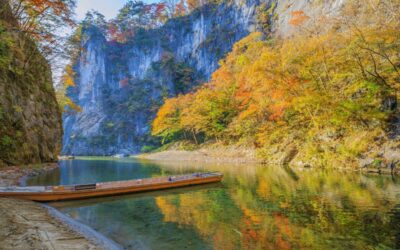We all know the famous neighbourhoods in Tokyo, like Shinjuku, Harajuku and Shibuya. If you’re anything like me, you might have been to these areas a lot and want to discover some new neighbourhoods. Here are eight incredible underrated places in Tokyo that are definitely worth adding to your go-to list. You might recognize these places by name or have strolled by them, but never really explored them. Let me tell you a bit about each neighbourhood and go into some of the different spots you can visit in each place.
Underrated Places in Tokyo
1. Shibamata
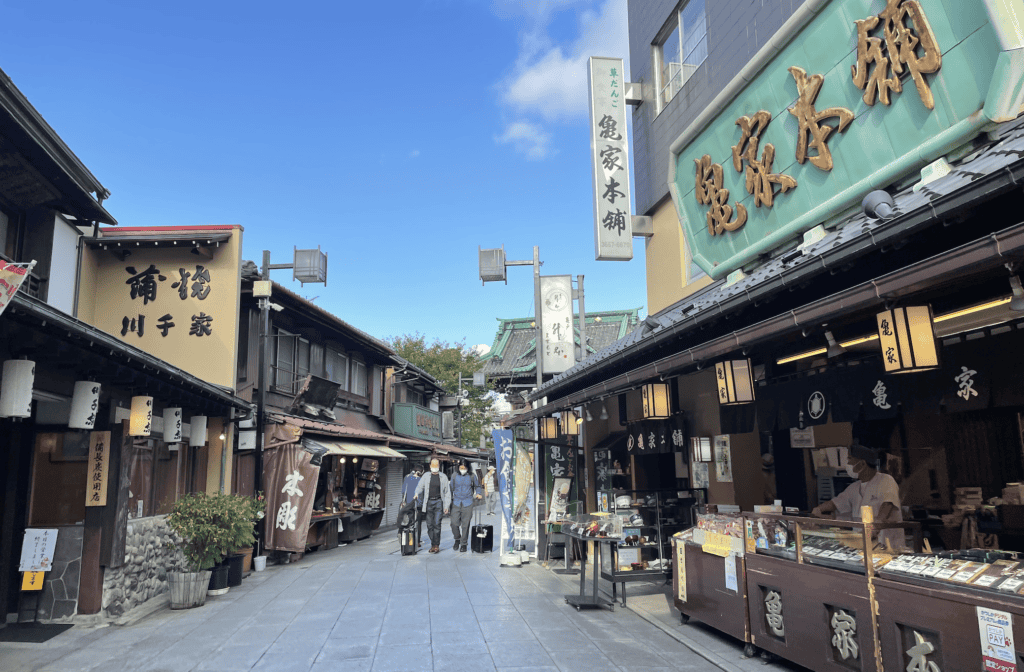
Shibamata is well-known among older Japanese people as the hometown of Tora-san, the main character of a film series called “Otoko wa Tsuraiyo”. The film title means “it’s tough being a man”. The film series stars Kiyoshi Atsumi as Tora-san, a traveling salesman wandering from town to town, hoping to return to his home in Shibamata. Each film featured a different leading lady and a different region of Japan.
In Shibamata, you can find multiple reminders of this film, like the bronze statues of Tora-san and his sister, Sakura, at Shibamata Station. Some of the shops along the shopping street, Taishakuten Sando, even have posters and decorations from the film.
At Taishakuten Sando, you can find shops selling treats like dumplings, candies, and Japanese crackers. Take a stroll down this retro street lined with shops and buildings that have stood for over a century, and savor the experience of eating while on the move. There are also stores that rent out yukatas here, so if you’re interested, try the yukata experience out for yourself.
Located along the Edo River, the Tora-san Museum offers a glimpse into the world of “Otoko wa Tsuraiyo”, but even those unfamiliar with the movie can relish the retro charm of the Showa era, making it a perfect spot to immerse themselves in traditional Japanese ambiance.
In Shibamata, you can also find Yamamoto-Tei, a Japanese-Western eclectic building that incorporates Western architecture; it is a very old mansion built in the late Taisho era (1912-1926).
Another must-visit is the Shibamata Taishakuten Temple, a symbol of Shibamata. Just inside the gate, there is a 500-year-old pine tree that stretches across the hall. This temple is known for its wooden carvings, and you can check out the panels of carvings covering the outer walls of the hall, each depicting a scene from Buddhist scripture and folklore.
Make sure to visit the unique and well-maintained garden at the back of the temple, where you can stroll around in the covered walkway and enjoy the scenery, no matter the weather.
2. Ryogoku
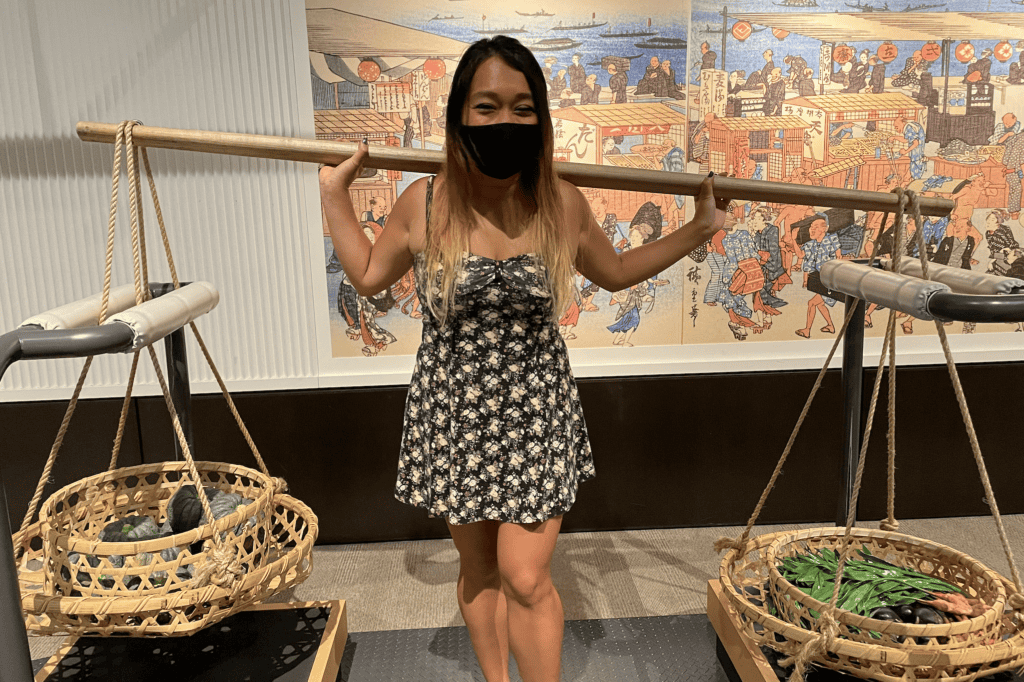
When they hear Ryogoku, many people think of sumo wrestlers, but there’s more to this fantastic area than just that. It’s a place where you can immerse yourself in sumo, culture, and nature all at once.
The Edo-Tokyo Museum stands as a prominent landmark in the area, featuring exhibitions that delve into the history of both “Edo” and “Tokyo.” With a sprawling permanent exhibition room spanning 9,000 square meters, it’s divided into two main areas: the Edo Zone and the Tokyo Zone.
Another must-visit spot in the area is the Former Yasuda Garden, where you can immerse yourself in the changing natural scenery across all four seasons. Dating back to the Genroku era (1688-1704), this daimyo garden was originally owned by Mr. Zenjiro Yasuda of the Yasuda Zaibatsu. It’s renowned for its serene ambiance, boasting Japanese beauty with features like Yukimi lanterns nestled among lush greenery and small islands in the pond inhabited by carp and turtles, making it a favorite among both locals and foreigners alike.
3. Nishi-Ogikubo
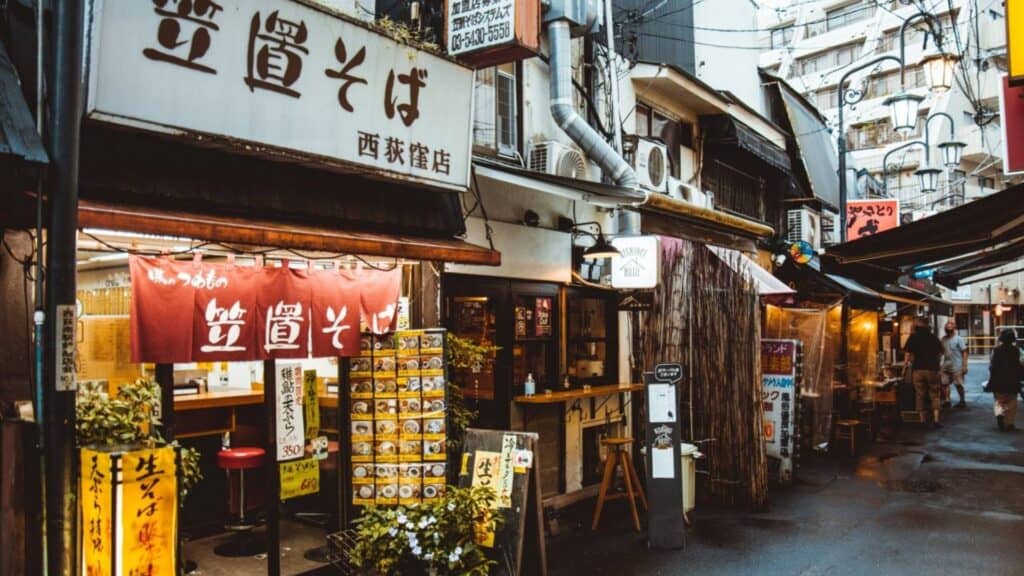
Nishi-Ogikubo is the town next to Kichijoji, which often tops Tokyo’s most-desirable-place-to-live list.
Nishi-Ogikubo, nicknamed “Nishiogi,” has many old-fashioned shops and a retro townscape with a downtown atmosphere. At the same time, new shops—like fashionable old folk house cafes and antique stores—are opening one after another, making it a great place to see the old and the new live side-by-side.
There are many shopping streets around Nishi-Ogikubo Station with a back alley atmosphere. The arcade of “Nakadori-Gai” is coloured like a traffic light in green and red. For some reason, a pink statue is suspended on the ceiling of the arcade. There are many interesting shops, cafes, and restaurants in “Nakadori-Gai”, so make sure to take your time when scrolling along the street.
If you like alcohol, especially Japanese alcohol, then stop by Mitsuya Liquor Store, where you can find all kinds of obscure nihonshu (Japanese alcoholic drink) from all over Japan. They’ve been in business since 1926, and the staff is friendly and helpful without being pushy. They have notes on recommended bottles, but only in Japanese. Watch out for genshu 原酒, because it can have up to 20% alcohol.
4. Hino
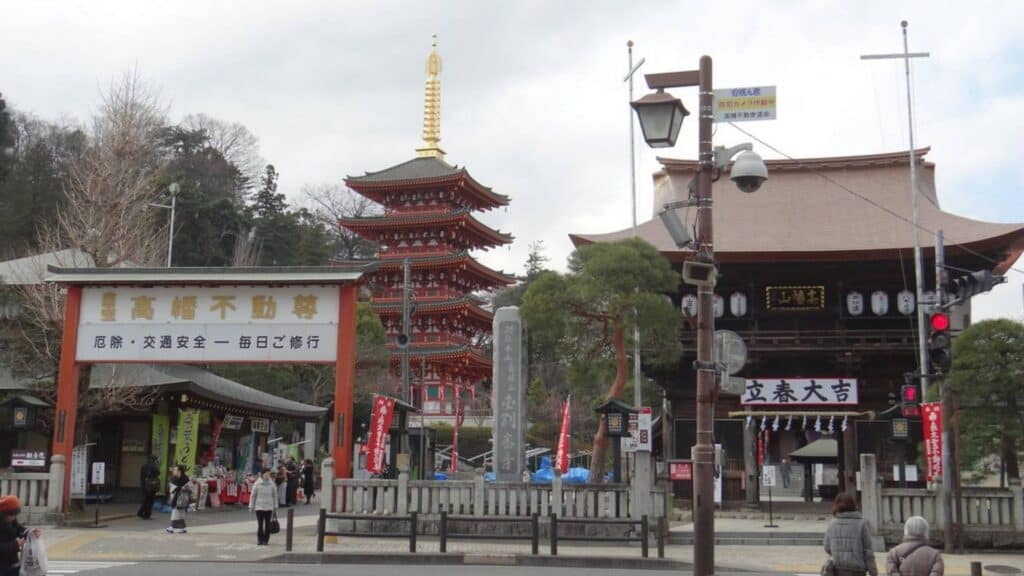
You might not have heard of Hino, but it’s definitely worth adding to your list of places to visit. With its stunning greenery and pristine streams, it’s hard to believe you’re still in Tokyo. Situated in the southern part of the Tama region, Hino is just a 30-minute ride from the city center.
The area is well-known for its association with Shinsengumi, a special police force organised by the military government during the late Tokugawa shogunate. Hino City is the birthplace of Shinsengumi’s deputy chief, Toshizo Hijikata, and the leader of the 6th division, Inoue Genzaburo. During the Edo period, the village of Hino developed as a post station, a place where travellers could rest on their journey around the country.
In Hino, there are numerous places where you can delve into the history and culture of the Shinsengumi.
One such place is the Shinsengumi Hometown History Museum, which features a permanent exhibition spanning from the birth to the end of the Shinsengumi, along with various special exhibitions related to the group. Visitors can even try on Shinsengumi costumes, immersing themselves in the role of a soldier.
Additionally, Yasaka Shrine in Hino is closely linked to the Shinsengumi. Also known as “Tenno-sama,” this shrine is believed to be dedicated to swordsmen who practiced Tennen Rishin-ryu, a style commonly associated with both core members of the Shinsengumi and local farmers.
5. Jiyugaoka/ Todoroki
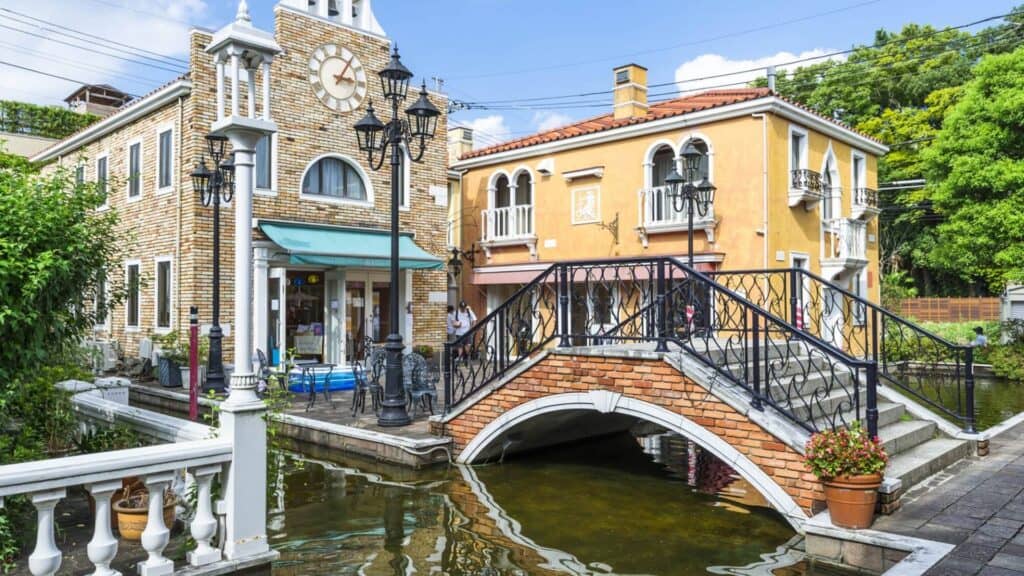
Jiyugaoka is one of the most fashionable cities in Tokyo. Named after a local school known for its liberal education, Jiyugaoka, literally “Freedom Hill”, used to be a rural area on the southern end of Meguro that started to develop in the 1920s after railways were introduced.
Although most of Jiyugaoka was demolished during WWII, the neighborhood was quickly rebuilt and modernised. So, there is no wonder that it currently ranks as one of the most desirable places to live in Tokyo. No matter what day of the week you visit Jiyugaoka, expect relaxing vibes with wide, pedestrian-friendly avenues, fashionable boutiques, enticing craft stores, and trendy cozy cafes.
La Vita is a unique spot here in Jiyugaoka that reminds you of Venice. It is a commercial complex with interior shops and general stores, so you can enjoy shopping and sightseeing in an open atmosphere. This place is lit up at night, making it look even more fantastic.
Just one train stop or a 20-minute walk away is Todoroki Valley. It is the only valley in the 23 wards of Tokyo, and because this spot isn’t very well-known, you can truly indulge in the peaceful and beautiful scenery.
6. Tennōzu Isle
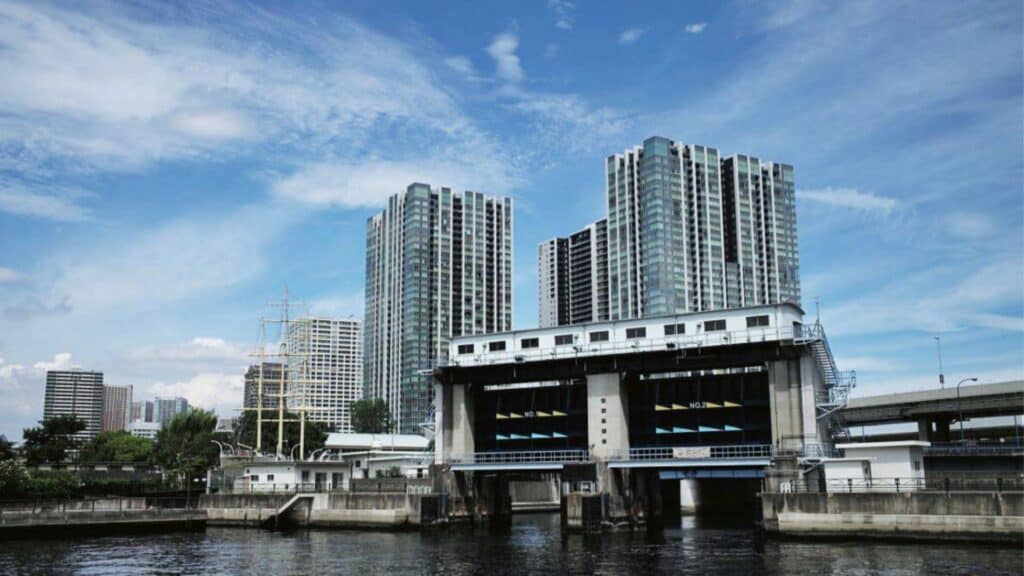
Tennozu Isle floats in the seaside area of Tokyo’s Shinagawa Ward. It is a small area but filled with all kinds of attractions, including an open boardwalk that lets you go on a stroll with an up-close view of the waterside.
The view is lovely from every angle on the boardwalk, and there are chairs in some places, so you can spend a relaxing time basking in the sun. At night, the surrounding buildings are lit up and you can take in the gorgeous night view here. There are also many fashionable cafes and restaurants along the boardwalk, so you can have a cup of tea or a meal while gazing at the glittering skyscrapers.
Higashi-Shinagawa Marine Park is a green park connected by the Isle Bridge. From the deck on the rooftop, you can see the Tennozu Canal and the Meguro River Water Gate installed at the mouth of the Meguro River up close. There is also a mini botanical garden where you can enjoy seasonal flowers and herbs. The observatory here overlooks the waterfront park, the canals, and the skyscrapers beyond.
7. Toyosu

Toyosu is a popular city with plenty of activities and great food. With the relocation of the Tsukiji Market to Toyosu in November 2016, Toyosu has been getting more and more attention.
The Toyosu Market consists of three market buildings, a fisheries wholesale market, a fisheries wholesale market and fruits and vegetables. It was originally a wholesale market for professionals, but part of it is open to the general public and tourists.
The Toyosu Market is roughly divided into three buildings—two Fisheries Wholesale Market Buildings, and one Fruit and Vegetable Wholesale Market Building—which are located across the road from each other. The restaurant area of Toyosu Market is also divided into three areas, with a variety of restaurants that offer Japanese food, seafood bowls, tempura, western food, curry, Chinese food, and beef bowls. Even though there is a huge variety, most dishes are centred around seafood. Come here to enjoy a delicious meal when you visit Toyosu.
LaLaport Toyosu is another must-go landmark of Toyosu. It is a large-scale commercial facility with about 180 stores, making it the perfect place to shop for anything from home appliances to interior goods, and household goods. It is also home to a number of restaurants that each offer scrumptious eats.
One of the main draws here is TeamLab Planets, a vast immersive space crafted by TeamLab, known for their technology-driven artworks. At this venue, you’ll experience the art barefoot, with some of the seven installations even involving walking through water. It’s a truly unique experience to be enveloped in digital art while snapping photos of the captivating displays all around you.
If you are interested in sports, check out the Tokyo Sports Playground. It has six different areas, including a running track, and a basketball court, with some of the facilities open for you to enjoy and use freely.
8. Kitasenju
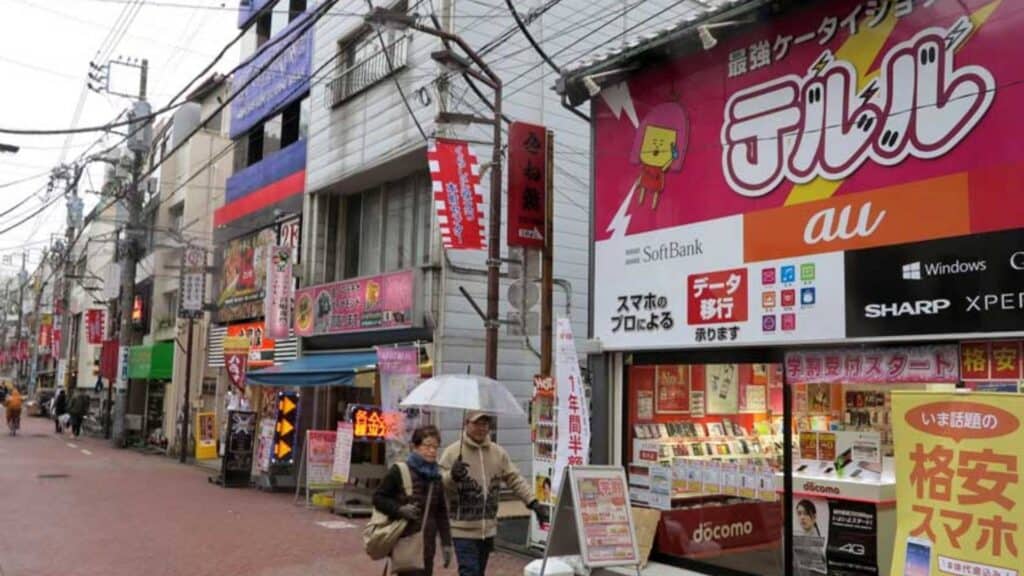
Kitasenju boasts numerous old buildings and exudes the historic ambiance of Edo. With its convenient access to five train lines and tranquil city atmosphere, it has emerged as a sought-after destination for tourists and a desirable place to call home.
Senju Street Station was originally a fish store but has become a tourist information center for Kitasenju. It has a nostalgic retro appearance. There is also a mini exhibition corner associated with Kitasenju for you to discover the history and culture of this area.
The Arakawa River, which flows through Adachi Ward, brings a relaxing atmosphere to the area. The Adachi Arakawa Visitor Center is located about a 15-minute walk from Kitasenju Station and holds different exhibits and activities related to Arakawa. Here, you can delve into the rich history and natural beauty of the area through extensive displays featuring information about Arakawa itself, as well as its diverse insect and aquatic life.
Adachi is also known for the Adachi fireworks. A tradition that began in the Meiji era, it is said that the fireworks were launched to celebrate the completion of Senju Ohashi. The 1st Senju Fireworks Festival was held in 1918. Now, it is held around the end of July every year. So, if you are around Tokyo around that time, make sure to drop by and see the Adachi fireworks!
See Another Side of Tokyo
Passionate about exploring the lesser-know parts of Tokyo? The places described here are just some of the hidden gems that this city holds, and our local expert guides can show you a side of Tokyo you’ve never seen before.
To make the most of your Tokyo trip, join our guided tours or let us craft you a completely personalised itinerary with our Flip Travel Planner service.

